Quickstart guide
Set up your OneSignal app and start sending messages!
Welcome to OneSignal!
Whether you’re migrating from another platform or starting fresh, we’re excited to have you here!
This quickstart guide will help you set up your account and send your first message in just a few steps. If you haven’t already, create your account to get started.
Create your organization
Your Organization is your hub for managing apps, channels, and billing. You can use different organizations for staging vs production, or for apps with separate billing needs.

Create your organization which should reflect your company, project, and/or environments (staging vs production).
Add an app
Once your organization is set up, create your first app. You can have as many apps as you need.
Best Practices:
- Use descriptive names (e.g., "Retail App - Production").
- Create separate apps for different environments (Production, Staging, Development).
- Each app can support multiple messaging channels (mobile push, web push, email, sms).
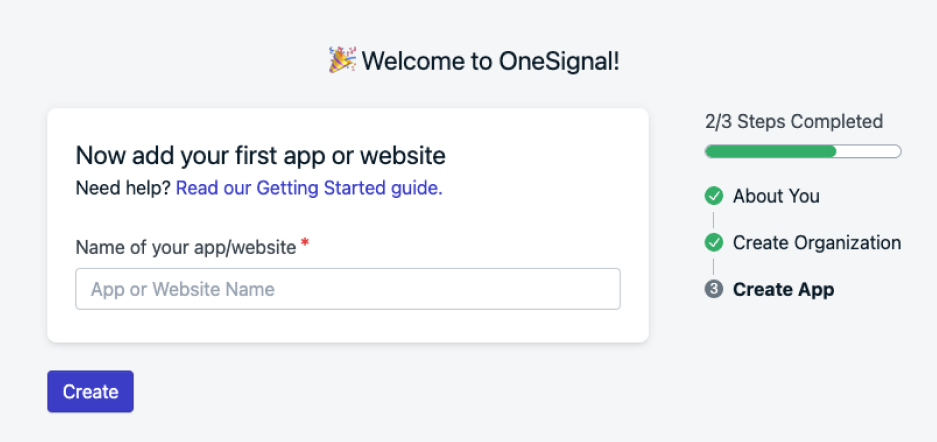
Name your app something descriptive, indicating the project and/or environment.
Set up your channels
Choose your first channel and follow the setup guide. You can add more channels later! We support multiple messaging channels to reach your users wherever they are:
- Push Notifications: Web, iOS, Android, Huawei, Amazon.
- In-App Messages: Rich, interactive messages within your app.
- Email: Transactional and marketing emails.
- SMS: Text messaging for time-sensitive alerts.
- Live Activities: Dynamic updates for iOS.
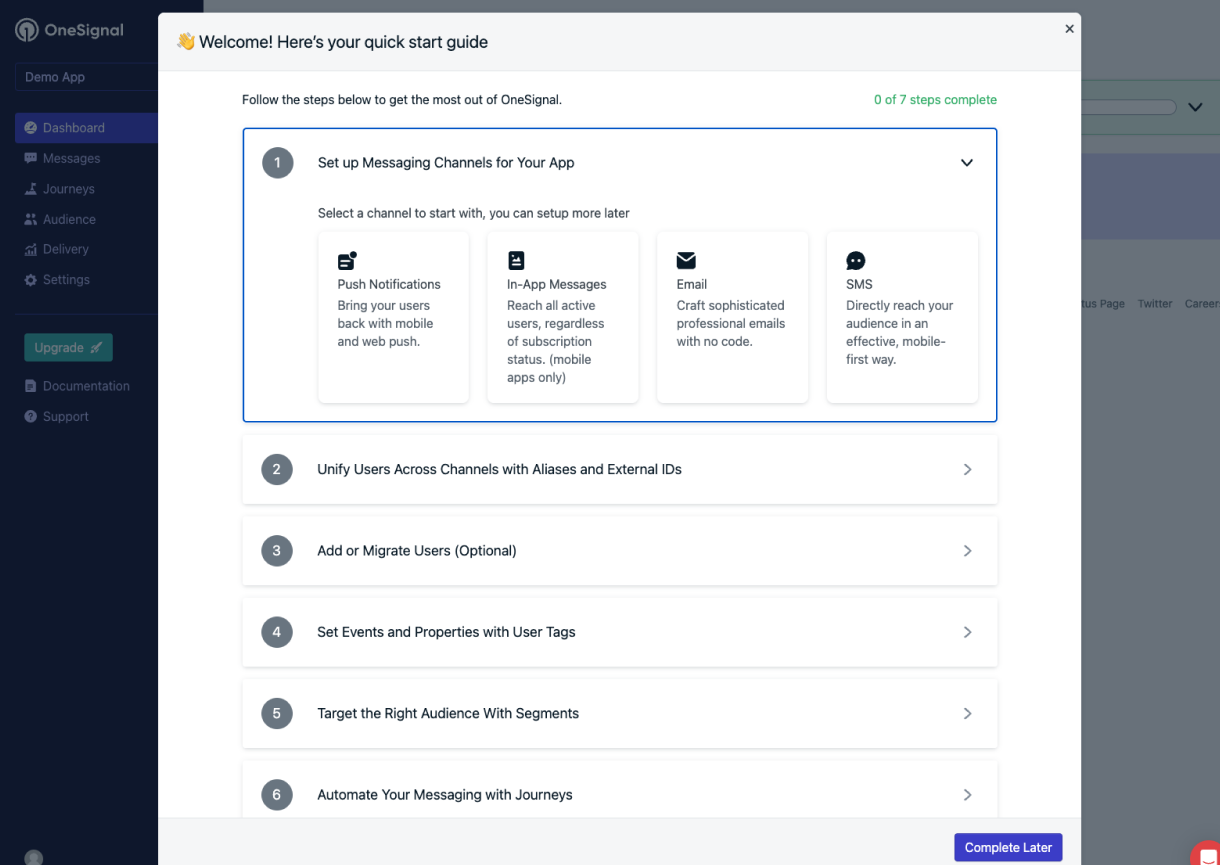
Pick your first channel and follow the setup guide. Once complete add more channels to the same app!
Channel setup
Visit the Channel Setup page to get started. Don't forget to invite your developer if using push notifications, in-app messages or live activities!
Understand users & subscriptions
As users engage with your app, they’re assigned a OneSignal ID (user ID) and Subscription IDs (based on their devices or contact methods).
- A single user can have multiple subscriptions (e.g., mobile + web + email + SMS).
- Users are anonymous until identified with an External ID.
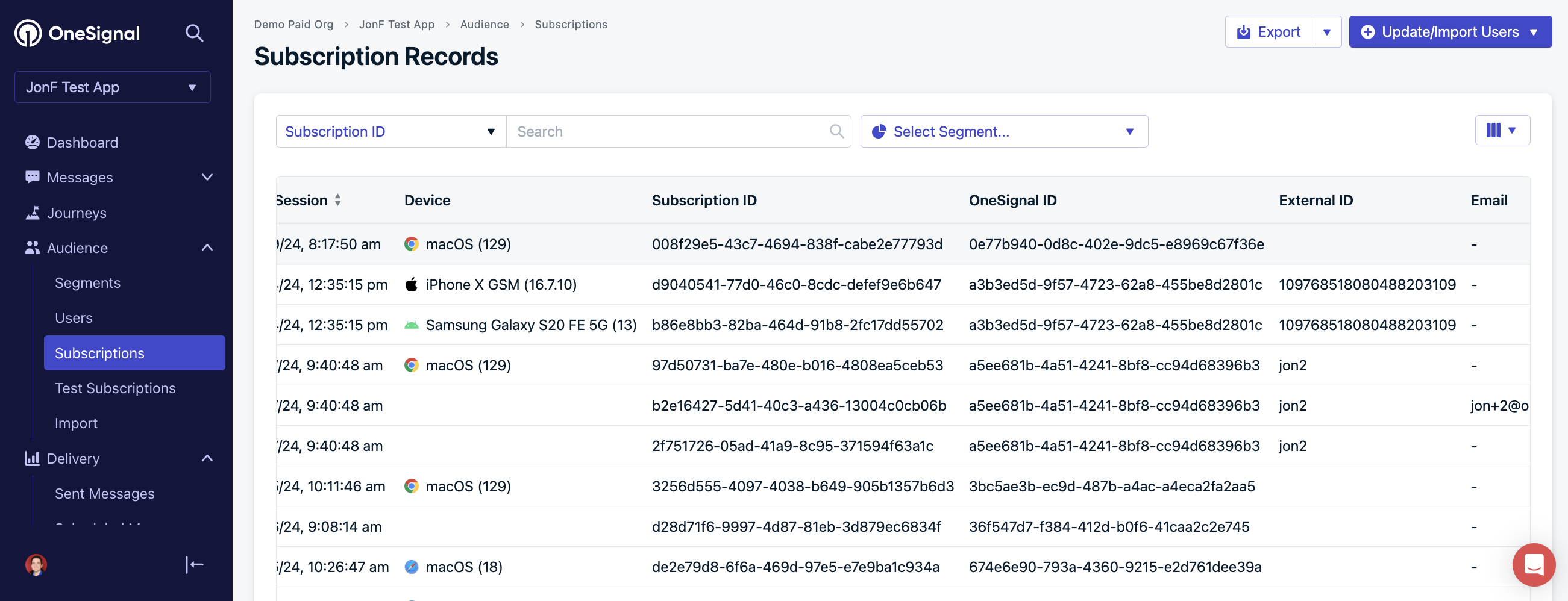
Your Audience > Subscriptions page where you can find your user's subscriptions.
Users & subscriptions
See Users for details on the OneSignal ID, External ID, and updating users.
Our Subscriptions page details everything about all subscription types.
Collect user data with tags
Use tags to store user data or track events. Use them for advanced use cases with Segments and Message Personalization. Examples of commonly set tags:
- User Properties:
first_name,city,subscription_tier - Behaviors:
cart_abandoned,last_login_date,onboarding_complete - Preferences:
notification_frequency,theme_preference
Data tags
See our Tags for details on setting up events & user properties.
Build segments
Create dynamic segments using tags and behavior data—like "Last session greater than a week" or "Added item to cart".
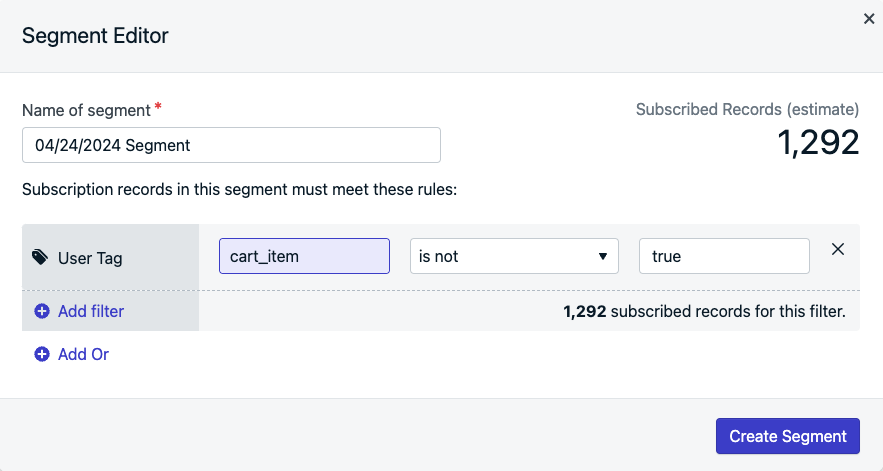
Example segment creation with User Tag filter.
Create your audience with segments
Visit our Segments page to learn all the ways to group users into audiences.
Send messages
Design and send messages across the channels you’ve set up. You can also save Drafts or reuse Templates later.
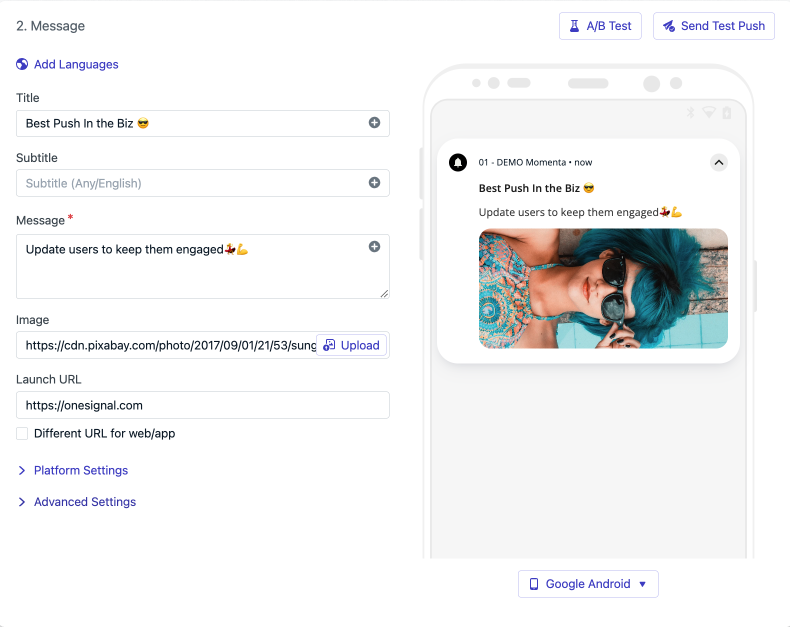
Image showing push editor message contents.
Sending messages
See our Messages section for the different channel guides. You can also get your ideas saved for later with Templates or Drafts.
Set your users on a journey
Use Journeys to send automated, multi-step campaigns based on user behavior—like onboarding, abandoned carts, winback flows, and anything else you can imagine!
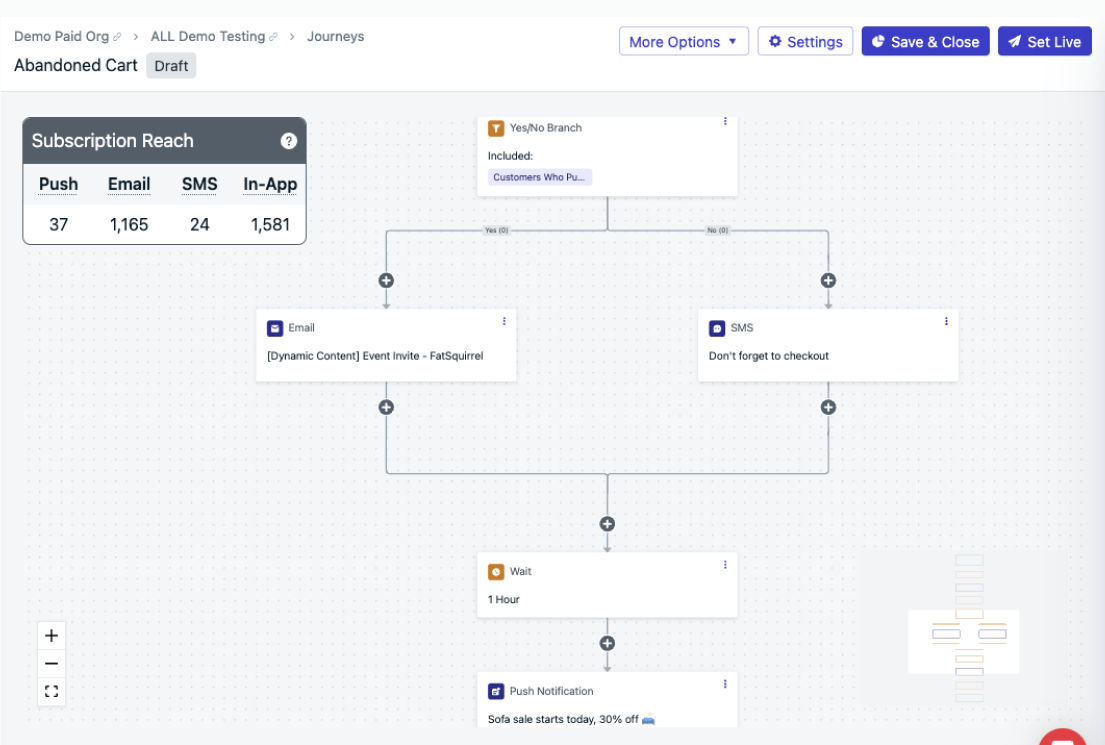
Example of an Abandoned Cart Journey.
Setup journeys
Create onboarding, re-engagement, event-based and so many more automations with Journeys.
Measure impact with analytics
Track the performance of your messaging campaigns and understand user engagement through OneSignal's analytics features.
Key Analytics Capabilities:
- Campaign Performance: View delivery rates, open rates, and conversion metrics.
- User Engagement: Analyze how users interact with your messages over time.
- A/B Test Results: Compare different message variations to optimize performance.
- Custom Event Tracking: Monitor specific actions triggered by your messages.
Understanding analytics
Start with our Analytics guide to get started.
Need help?
Contact our Support team via [email protected] or use the red button in the bottom right of your screen. We're happy to help!
Updated 3 months ago
